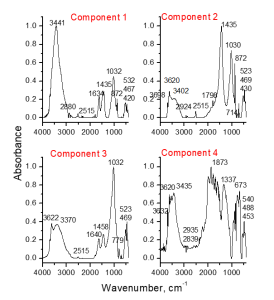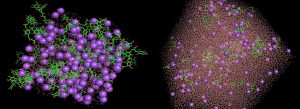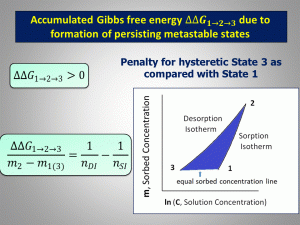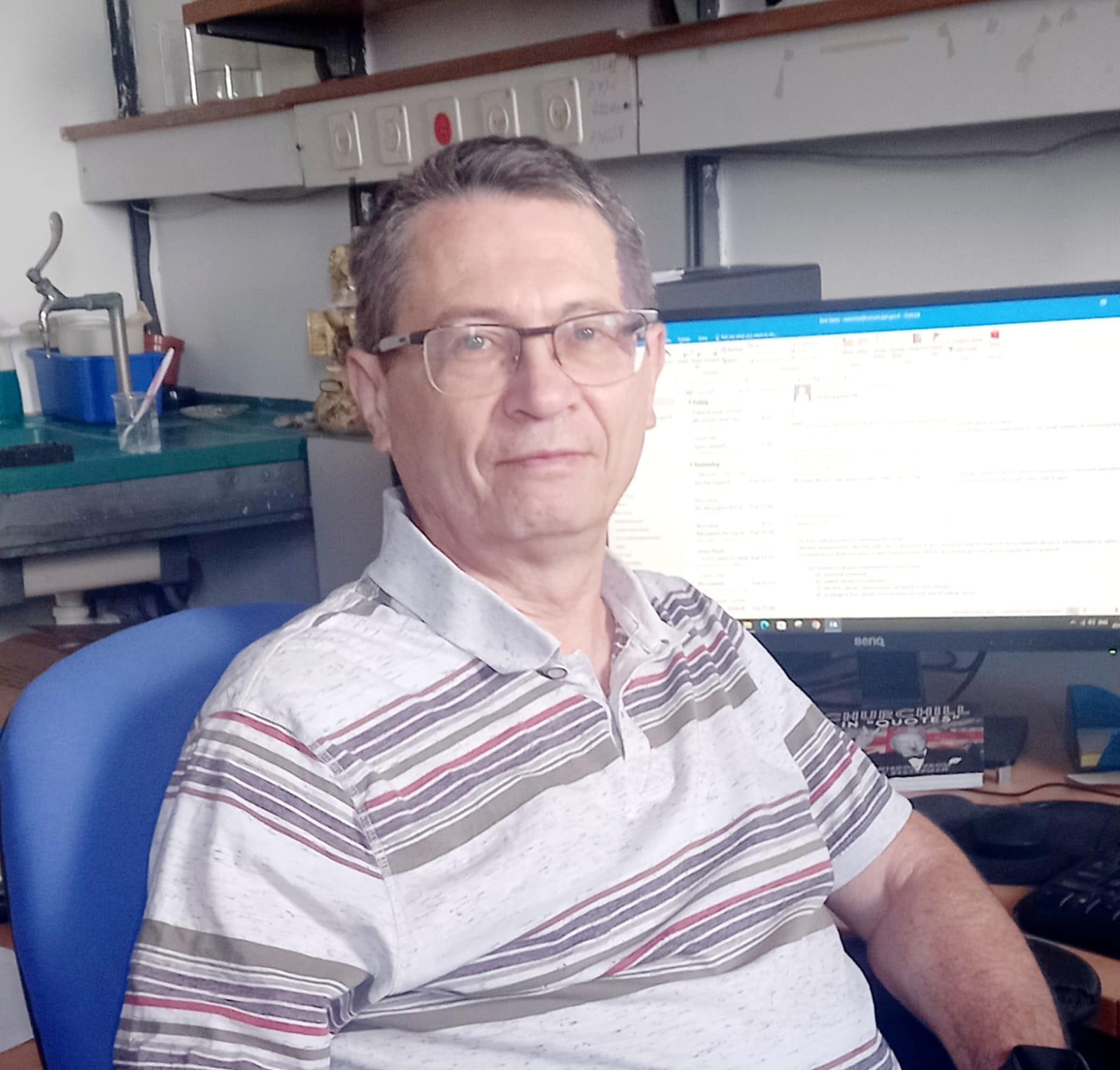Mikhail Borisover Ph.D.
Research Scientist
- Institute of Soil, Water and Environmental Sciences
- Soil Chemistry, Plant Nutrition and Microbiology
- Institute of Soil, Water and Environmental Sciences, the room 318
- +972-39683314
Research Interests
1. Current research projects with my participation:
-
A novel integrated system to valorize anaerobic digestate for its safe reuse in agriculture (with Roy Posmanik – Technion, Guy J. Levy – ARO)
-
Integrated multi-channel fluorescent and Raman sensor for in-line monitoring of water mixtures for field irrigation uses (with Iftach Klapp – ARO)
-
The impact of different agriculture practices on soil health, their carbon footprint, and the resilience of the agriculture system (with Gil Eshel – Ministry of Agriculture, Guy J. Levy and Oren Shelef – ARO, Tal Svoray and Meidad Kissinger – BGU)
-
Assessment of decomposition rates of plastic materials in composting processes and the development of rapid biodegradation tests (with Yael Laor, as a part of a Bioplast Group)
2. I am very interested in
-
using IR spectroscopy of bulk soils combined with a nonnegative multivariate curve resolution (MCR)/nonnegative matrix factorization (NMF) to relate IR spectra to soil properties, with a particular focus on soil organic matter, carbon storage and sequestration. Vibrational spectroscopies are very informative and (relatively) simple for use. I think that there is a huge potential: the MCR/NMF techniques allow to link a spectrally-identified composition of soils (as well as many other complex environmental matrices) to their properties in a non-(less-) empirical way.

A nonnegative MCR-ALS decomposition of soil mid-IR spectra into four components -
Lado, M., Sayegh, J., Gia Gadñay, Ben-Hur, M., Borisover, M. (2023). Heat-induced changes in soil water-extractable organic matter characterized using fluorescence and FTIR spectroscopies coupled with dimensionality reduction methods. Geoderma, 430, 116347.
-
Borisover, M., Lado, M., & Levy, G. J. (2025). Modeling Soil Organic Carbon Content Using Mid-Infrared Absorbance Spectra and a Nonnegative MCR-ALS Analysis. Soil & Environmental Health, 3(1), 100123.
-
Borisover, M., Bar-Tal, A., Bukhanovsky, N., Berezkin, A., & Lado, M., Levy, G. J. (2024). Optical properties of water-extractable organic matter from soil respond to changes in irrigation water quality. Pedosphere. In press. Journal Pre-Proof.
-
-
the simultaneous nonnegative MCR/NMF-based analyses of multiple spectroscopies applied to characterize the samples of interest; “smart” simultaneous decompositions of multiple spectroscopy-based descriptions of complex matrices into the contributions from the same chemically-meaningful components. Such decomposition, i.e., “mathematical chromatography“, may indeed provide plenty of hardly accessible information on composition of environmental systems.
-
molecular modeling of natural organic matter (which foremost requires proper approaches in developing organic matter molecular models)
-
- Borisover, M., Petrov, D., Oostenbrink, C., & Galicia-Andrés, E. (2025). Diluting humic substances in water in molecular dynamics simulations: Are aggregates stable? Colloids and Surfaces A: Physicochemical and Engineering Aspects, 704, 135507.

-
a better understanding of sorption-desorption hysteresis observed in solution experiments on various types of sorbents including soils and sediments. Sorption-desorption hysteresis associated with soils and sediments is a very puzzling phenomenon. My primary focus is on the processes characterized by apparently equilibrated sorption isotherms, identifying and characterizing metastable states possibly formed during desorption. It may be of great environmental significance to approve the appearance of such metastable states in typical lab sorption-desorption experiments, quantify them and to get a perception of whether this type of hysteresis is essentially an artifact or makes sense in multiple real-life scenarios.

-
- Borisover, M. (2019). Accumulated Gibbs free energy as a quantitative measure of desorption hysteresis associated with the formation of metastable states Chemosphere, 215: 490-499.
-
Borisover, M. (2021). Sorption hysteresis on soils and sediments: Using single‐point desorption isotherms to obtain characteristic free energy values. European Journal of Soil Science, 13043.
-
Borisover, M. (2023). Time-independent desorption hysteresis in liquid phase sorption experiments: the concept and the models based on gate-sorption site coupling Adsorption, 29, 87-102.
Research Areas
- soil and environmental chemistry; sorption interactions of organic and inorganic chemicals with soils, soil components and environmentally important sorbents
- natural organic matter, its composition, structure, and participation in biogeochemical processes
- spectroscopies combined with mathematical methods of analysis for characterizing environmental systems (soil, organic matter, waste)

